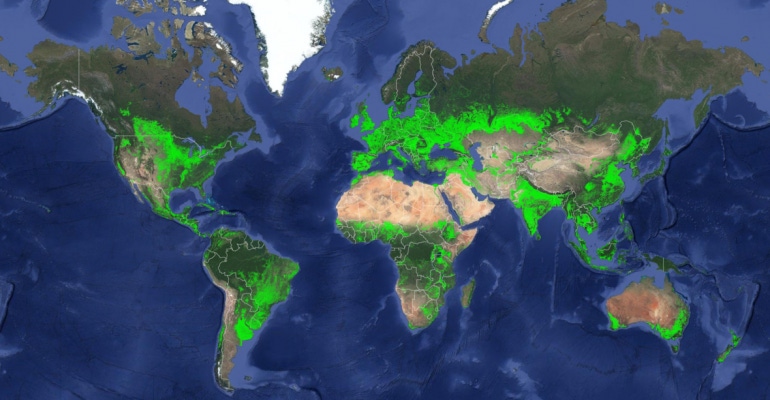Using satellites, the government has found there’s more ag land worldwide than previously estimated. Is that good or bad?

Change is inevitable; progress is optional. I don’t remember who first said that quote, but it becomes more and more true every day, it seems. Today’s blog is very much about the changes that technology brings us. Depending on your outlook about the world in general, those changes may or may not be progress.
One of BEEF’s sister publications, Southwest Farm Press, reported recently that the world has more cropland than previously estimated. About 20% more, in fact.
We know this courtesy of a global map created by the U.S. Geological Survey (USGS). The study and resulting map are part of the Global Food Security-Support Analysis Data @ 30-m Project, or GFSAD30.
The map shows the world has 1.87 billion hectares of cropland, about 20% (or 250 to 350 million hectares) more than previous assessments. The change from previous studies is due to better understanding of large areas never before mapped or places inaccurately mapped as non-cropland, according to a statement by USGS. A hectare equals roughly 2.5 acres.
While that’s good news, it isn’t the focus of this blog. How that assessment came about is.
The map is built primarily from Landsat satellite imagery with 30-meter resolution, which is the highest spatial resolution of any global agricultural dataset, USGS says. Statistics on every country in the world can be seen on the map.
That means folks can see an awful lot about what’s going on around your place from a long way away.
Is that progress? In many ways, yes. For some in the cattle business, however, it’s very likely a frightening idea. Like any technology, it can be used for great good. And it has the potential to be used negatively as well.
In my opinion, the positive potential that technology and its resulting products, like this map, has for the cattle business outweighs the downside. But the main thing is, we can’t stop the change that technology brings to our operations. Whether or not we use that to move our operations forward is up to us.
I’m writing this the day before Thanksgiving, and since I’m borrowing from others, allow me to continue in that vein by bringing you a bit of Thanksgiving history, courtesy of today’s Daily Livestock Report.
It is one of the interesting — and, to some, ironic — facts of history that Thanksgiving did not become an official holiday until October of 1863.
Yes, the observance dates back to 1621 when Pilgrim settlers and their Native neighbors held a three-day feast to celebrate the settler’s first successful harvest in their new home. And yes, the holiday was celebrated during the Revolutionary War and was “recommended” by President Washington in 1889 in a proclamation that set it for November 26th. That happened to be the fourth Thursday in November and a tradition was born. Sort of.
But there was no official national Thanksgiving Day until Oct. 3, 1863 when President Lincoln declared that it be celebrated on the fourth Thursday of November. In his proclamation, Lincoln listed a number of blessings that had been received by the nation in spite of the ongoing war. He cited freedom from aggression by other countries at that most vulnerable of times, productive farms (“ploughs”), mills (“shuttles” of weaving looms), ships, axes and mines, a growing population and an expectation of strength, vigor and “large increase of freedom” in years to come.
That optimism, of course, belied the concerns of much of the country. Northerners did not yet realize that the tide had turned decisively the prior July when Union troops had held their ground on a ridge near a cemetery in the southern Pennsylvania hamlet of Gettysburg. They were tiring quickly of this war that was supposed to have been over in months. Southerners believed in their cause and hoped for the best of outcomes but had to be seeing the numerical advantage and industrial might of the North coming to bear more each day.
Yet President Lincoln pointed the nation toward what he felt was a proper attitude of thankfulness when he wrote:
“No human counsel hath devised nor hath any mortal hand worked out these great things. They are the gracious gifts of the Most High God, who, while dealing with us in anger for our sins, hath nevertheless remembered mercy. It has seemed to me fit and proper that they should be solemnly, reverently and gratefully acknowledged as with one heart and voice by the whole American people.”
Have a wonderful, fulfilling and safe Thanksgiving.
About the Author(s)
You May Also Like



